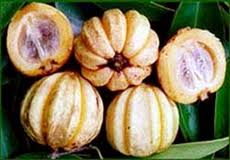Some Vitamins and minerals that will help in weight loss.
B vitamins
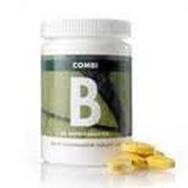
These are important vitamins in terms of weight loss, and they are often known as the 'stress' vitamins. Vitamins B3 and B6 are especially important because they help to supply fuel to cells, which are then able to burn energy. Vitamin B6 together with zinc is necessary for the production of pancreatic enzymes which help you to digest food. If your digestion is good, you will be much more likely to use your food efficiently, instead of storing it as fat.
Vitamins B2, B3 and B6 are necessary for normal thyroid hormone function production, so any deficiencies in these can affect thyroid function and consequently affect metabolism. B3 is also a component of the glucose tolerance factor which is released every time your blood sugar rises. Vitamin B5 is involved in energy production and helps to control fat metabolism.
As you can see, the B vitamins as a group are important and the best way to get them is in a good B-complex supplement.
Vitamins B2, B3 and B6 are necessary for normal thyroid hormone function production, so any deficiencies in these can affect thyroid function and consequently affect metabolism. B3 is also a component of the glucose tolerance factor which is released every time your blood sugar rises. Vitamin B5 is involved in energy production and helps to control fat metabolism.
As you can see, the B vitamins as a group are important and the best way to get them is in a good B-complex supplement.
Good sources of B vitamins:
legumes (like peas and lentils)
nuts
green leafy vegetables
broccoli
asparagus
bananas
beans
seeds
fish
soy
legumes (like peas and lentils)
nuts
green leafy vegetables
broccoli
asparagus
bananas
beans
seeds
fish
soy
Chromium
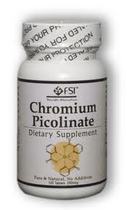
This mineral has been the most widely researched nutrient in relation to weight loss Chromium is needed for the metabolism of sugar and without it insulin is less effective in controlling blood sugar levels. This means that it is harder to burn off your food as fuel and more may be stored as fat. It also helps to control levels of fat and cholesterol in the blood. One study showed that people who took chromium over a ten-week period lost an average of 1.9kg (4.2lb) of fat while those who took a dummy tablet lost only 0.2kg (0.4lb).
Sources of Chromium:
chicken
corn
dried beans
eggs
fish and seafood
fruit
vegetables
mushrooms
potatoes with skin
whole grains and bread
chicken
corn
dried beans
eggs
fish and seafood
fruit
vegetables
mushrooms
potatoes with skin
whole grains and bread
Zinc
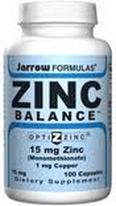
This is an important mineral in appetite control and a deficiency can cause a loss of taste and smell, creating a need for stronger tasting foods (which tend to be sweeter, saltier and more fattening!) Zinc also functions with vitamins A and E to manufacture the thyroid hormones.
Sources of Zinc:
oysters
lobster
crab
oysters
lobster
crab
Co-enzyme Q10
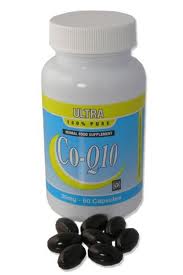
Co-enzyme Q10 is needed for energy production. It is found in all the tissues and organs in the body. As we get older we may become deficient, which results in a reduction of energy. It has been used to help heart problems, high blood pressure, gum disease and immune deficiencies.
It has also been shown to help with weight loss. A study showed that people on a low-fat diet doubled their weight loss when taking Co Q10 compared to those using diet alone.
It has also been shown to help with weight loss. A study showed that people on a low-fat diet doubled their weight loss when taking Co Q10 compared to those using diet alone.
Sources of Co-enzyme Q10:
fish
organ meats (liver, heart, or kidney)
germ portion of whole grains.
fish
organ meats (liver, heart, or kidney)
germ portion of whole grains.
Garcinia cambogia
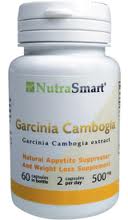
A tropical fruit called Garcinia cambogia which is used in Thai and Indian cooking contains HCA (hydroxy-citric acid), which encourages your body to use carbohydrates as energy, rather than laying them down as fat. The HCA in this fruit seems to curb appetite, reduce food intake and inhibit the formation of fat and cholesterol.
Other Vitamins
Iron
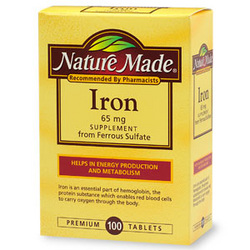
Iron is an essential for:
- the formation of hemoglobin and certain enzymes,
- many proteins and enzymes that maintain good health,
- transporting oxygen in the blood to all parts of the body,
- many metabolic reactions and the regulation of cell growth and differentiation,
- immune activity,
- proper functioning of the liver, and
- protection against the actions of free radicals.
Sources of Iron:
oysters
prune juice
clams
walnuts
chickpeas
shrimp
raisins
sardines
spinach
lima beans
kidney beans
turkey, (dark meat)
prunes
oysters
prune juice
clams
walnuts
chickpeas
shrimp
raisins
sardines
spinach
lima beans
kidney beans
turkey, (dark meat)
prunes
Vitamin C
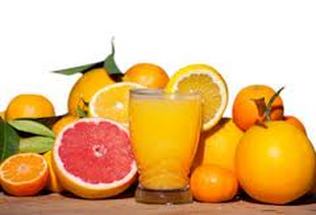
Vitamin C, also known as Ascorbic Acid, is a vital nutrient required by the human body for the growth and repair of tissues and is an antioxidant.
It is necessary to form collagen that, amongst other functions, helps keep the skin firm and to slow down the visible signs of aging.
The two most widely known benefits of Vitamin C are in the prevention of scurvy, a condition that can lead to death, and in the treatment of colds and influenza.
There is inconclusive research to suggest that it can also have some effect in heart disease,
polio and other conditions.
Until the 18th century scurvy was a principal killer of sailors on long voyages when fresh fruit and
vegetables could not be stored on board.
It is important to note that humans, unlike most other animals,
are unable to store vitamin C, and as a consequence a source should be included in the diet
on a regular basis.
Vitamin C is found in lemons, limes and other citrus fruits, mangoes, papayas, strawberries, tomatoes
broccoli and other green leaf vegetables, green peppers and bean sprouts amongst other plant sources.
It is necessary to form collagen that, amongst other functions, helps keep the skin firm and to slow down the visible signs of aging.
The two most widely known benefits of Vitamin C are in the prevention of scurvy, a condition that can lead to death, and in the treatment of colds and influenza.
There is inconclusive research to suggest that it can also have some effect in heart disease,
polio and other conditions.
Until the 18th century scurvy was a principal killer of sailors on long voyages when fresh fruit and
vegetables could not be stored on board.
It is important to note that humans, unlike most other animals,
are unable to store vitamin C, and as a consequence a source should be included in the diet
on a regular basis.
Vitamin C is found in lemons, limes and other citrus fruits, mangoes, papayas, strawberries, tomatoes
broccoli and other green leaf vegetables, green peppers and bean sprouts amongst other plant sources.
Vitamin A
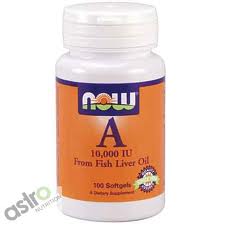
Vitamin A is a group of compounds that play an important role in vision, bone growth, reproduction, cell division, and cell differentiation (in which a cell becomes part of the brain, muscle, lungs, blood, or other specialized tissue.) [1-5]. Vitamin A helps regulate the immune system, which helps prevent or fight off infections by making white blood cells that destroy harmful bacteria and viruses . Vitamin A also may help lymphocytes (a type of white blood cell) fight infections more effectively.
Vitamin A plays a role in a variety of functions throughout the body, such as:
Vitamin A plays a role in a variety of functions throughout the body, such as:
- Vision
- Gene transcription
- Immune function
- Embryonic development and reproduction
- Bone metabolism
- Haematopoiesis
- Skin and cellular health
- Antioxidant activity
Good sources of vitamin A:
carrots
sweet potatoes
pumpkin
kale
cantaloupe
apricots
peaches
papayas
mangoes
carrots
sweet potatoes
pumpkin
kale
cantaloupe
apricots
peaches
papayas
mangoes
Vitamin D
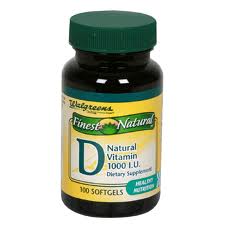
Vitamin D is a nutrient found in some foods that is needed for health and to maintain strong bones. It does so by helping the body absorb calcium (one of bone's main building blocks) from food and supplements. People who get too little vitamin D may develop soft, thin, and brittle bones, a condition known as rickets in children and osteomalacia in adults.
Vitamin D is important to the body in many other ways as well. Muscles need it to move, for example, nerves need it to carry messages between the brain and every body part, and the immune system needs vitamin D to fight off invading bacteria and viruses. Together with calcium, vitamin D also helps protect older adults from osteoporosis. Vitamin D is found in cells throughout the body.
Good sources of vitamin D:
egg yolks
fish oils
fortified milk
egg yolks
fish oils
fortified milk
Vitamin E
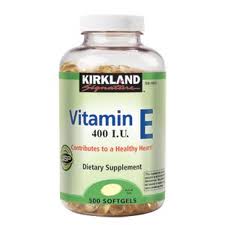
Vitamin E is a fat-soluble nutrient found in many foods. In the body, it acts as an antioxidant, helping to protect cells from the damage caused by free radicals. Free radicals are compounds formed when our bodies convert the food we eat into energy. People are also exposed to free radicals in the environment from cigarette smoke, air pollution, and ultraviolet light from the sun.
The body also needs vitamin E to boost its immune system so that it can fight off invading bacteria and viruses. It helps to widen blood vessels and keep blood from clotting within them. In addition, cells use vitamin E to interact with each other and to carry out many important functions.
The body also needs vitamin E to boost its immune system so that it can fight off invading bacteria and viruses. It helps to widen blood vessels and keep blood from clotting within them. In addition, cells use vitamin E to interact with each other and to carry out many important functions.
Good sources of Vitamin E:
nuts
green leafy vegetables
avocados
wheat germ
whole grains
nuts
green leafy vegetables
avocados
wheat germ
whole grains
Calcium
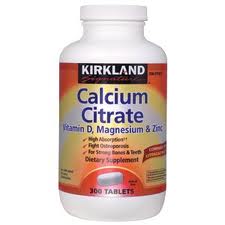
Calcium is a mineral found in many foods. The body needs calcium to maintain strong bones and to carry out many important functions. Almost all calcium is stored in bones and teeth, where it supports their structure and hardness.
The body also needs calcium for muscles to move and for nerves to carry messages between the brain and every body part. In addition, calcium is used to help blood vessels move blood throughout the body and to help release hormones and enzymes that affect almost every function in the human body.
The body also needs calcium for muscles to move and for nerves to carry messages between the brain and every body part. In addition, calcium is used to help blood vessels move blood throughout the body and to help release hormones and enzymes that affect almost every function in the human body.
Good sources of calcium:
broccoli
kale
spinach
oranges
beans
peas
tofu
peanuts
black beans
baked beans
fish
broccoli
kale
spinach
oranges
beans
peas
tofu
peanuts
black beans
baked beans
fish
Protein
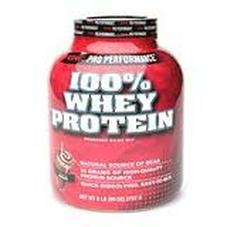
Protein is one of the three main macronutrients, which also include fat and carbohydrates. Macronutrients are nutrients that the body uses in large amounts. They are all-important, and have specific purposes.
Protein is used by the body for many different reasons, but one of the most important ones is its function as the building blocks for muscle. This fact leads many weightlifters and athletes eating huge amounts of it every day.
It is also used for brain function, cell regeneration, healthier skin and hair, and it is even responsible for increased immune function. Without it, the body would cease to function.
The best place to find protein is from animal sources. This includes fish, chicken, beef, eggs, milk, cheese and yogurt. There are also a variety of good vegetarian sources as well, including tofu, tempeh, edamame, nuts, seeds and grains. Nut butters are also a good source of protein, but they should be used sparingly as they are high in fat as well.
Protein is used by the body for many different reasons, but one of the most important ones is its function as the building blocks for muscle. This fact leads many weightlifters and athletes eating huge amounts of it every day.
It is also used for brain function, cell regeneration, healthier skin and hair, and it is even responsible for increased immune function. Without it, the body would cease to function.
The best place to find protein is from animal sources. This includes fish, chicken, beef, eggs, milk, cheese and yogurt. There are also a variety of good vegetarian sources as well, including tofu, tempeh, edamame, nuts, seeds and grains. Nut butters are also a good source of protein, but they should be used sparingly as they are high in fat as well.
